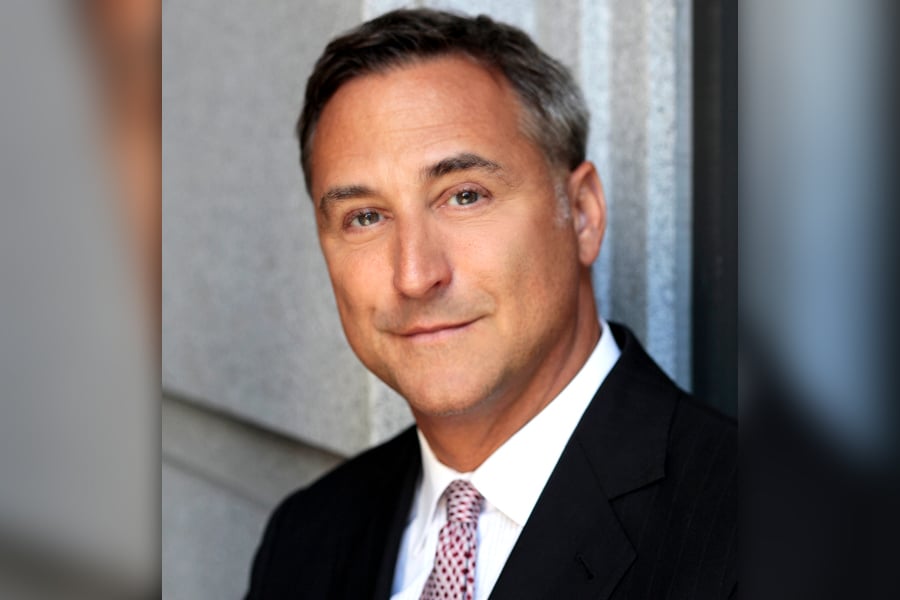

If diversification is the only free lunch on Wall Street, then fund manager Michael Cuggino is offering retirement investors a buffet.
Cuggino is president and fund manager at the Permanent Portfolio Family of Funds, and his Permanent Portfolio fund fell only 5.5% in 2022, compared with the 18.2% sell-off in the S&P 500 index and a 13% drop in the iShares Core US Aggregate Bond ETF. The blended fund’s relative outperformance in what was a brutal year for both stocks and bonds reflects its wide diversification into far-flung and often noncorrelated assets, such as precious metals, real estate and even Swiss francs.
Of course, the $2.8 billion Permanent Portfolio tends to underperform the S&P 500 in years when stocks take off, but the fund remains a favorite for investors who prefer to be cautious with their retirement stash.
InvestmentNews caught up with Cuggino to learn how he stitches the Permanent Portfolio together, as well as to get his views on fund components including gold, silver, real estate and technology stocks.
InvestmentNews: The Permanent Portfolio is highly diversified and holds precious metals, Swiss franc assets and real estate in addition to plain old stocks and bonds. Why is this right for a retirement portfolio?
Michael Cuggino: Permanent Portfolio allows an investor multiple avenues to profit, while simultaneously limiting downside risk, all while not having to predict or monitor the day-to-day fluctuations of the stock and bond markets or trying to outguess the Federal Reserve and the direction of interest rates. The combination of multiple asset classes in Permanent Portfolio, all of which do not correlate with each other and respond differently to various market scenarios, allows for certain asset classes to rise while others fall in relation to certain economic conditions such as inflation, deflation, growth or recession. This has resulted in an overall lower volatility for Permanent Portfolio and a gradual growth track for a long-term investor over the portfolio’s 40-year history.
IN: Why would a retiree want to hold precious metals? They don’t pay a dividend.
MC: A properly diversified portfolio such as Permanent Portfolio should have exposure to assets in addition to stocks and bonds for comprehensive wealth creation. Precious metals such as gold and silver provide portfolio diversification, a hedge against stock and bond returns, an offset to real or perceived inflation risk, and a hedge against economic or monetary upheaval. Such assets provide an anchor to more traditional portfolios of stocks and bonds. While it is true precious metals do not produce income, other assets in a properly diversified portfolio may provide income.
IN: Do you hold any TIPs or inflation-adjusted bonds in your portfolio? If not, why not, considering the current inflationary environment?
MC: Permanent Portfolio does not although it could if the portfolio’s management perceive a benefit in using them. However, the portfolio has enough inflation protection and income generation aspects to it through its different asset classes so that it does not need TIPs to succeed in the execution of its strategy. Further, TIPs are generally more expensive than regular bonds due to their protection and return promises, and the Permanent Portfolio believes it can achieve the benefits of using TIPs more cheaply through its overall strategy.
IN: Why is real estate a good investment now for retirees, considering the drop in housing prices and troubles in commercial real estate?
MC: Real estate provides some of the benefits of precious metals in terms of portfolio diversification and hard asset protection in an inflationary environment, but also provides portfolio income and capital gain potential, something most retirees are very interested in. Real estate also provides benefits in a growth or low-interest-rate environment as businesses operating on improved or developed real estate generally experience higher occupancy rates and increasing leasing rates as old leases roll over and new ones are written, thereby increasing income to the owner of the real estate. With the Federal Reserve raising interest rates so quickly over the last year, real estate assets have sold off considerably, making such investments a reasonably priced purchase for a long-term, total return-oriented investor.
IN: Technology stocks have struggled in the past year. What is your exposure and do you expect this to continue?
MC: Permanent Portfolio has technology exposure, however, it is not overly exposed to the sector. Technology generally is a dynamic, growth-oriented industry, and the Permanent Portfolio seeks investments in growth investments as well as those that are more risk averse. In its equity selections regardless of industry, the Permanent Portfolio generally seeks companies that can control their cost structure and possess pricing power for their goods and services, and technology is no exception to this.
Technology stocks have corrected significantly over the last year, however, many are still expensive, especially with earnings estimates softening and companies laying off employees. That being said, the portfolio continues to seek out growth at a reasonable price in the tech space as it does in all industries.

Executives from LPL Financial, Cresset Partners hired for key roles.

Geopolitical tension has been managed well by the markets.

December cut is still a possiblity.

Canada, China among nations to react to president-elect's comments.

For several years, Leech allegedly favored some clients in trade allocations, at the cost of others, amounting to $600 million, according to the Department of Justice.
Streamline your outreach with Aidentified's AI-driven solutions
This season’s market volatility: Positioning for rate relief, income growth and the AI rebound
